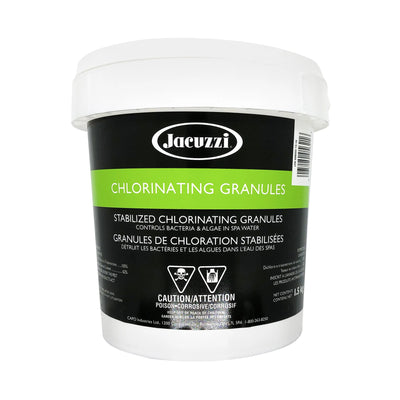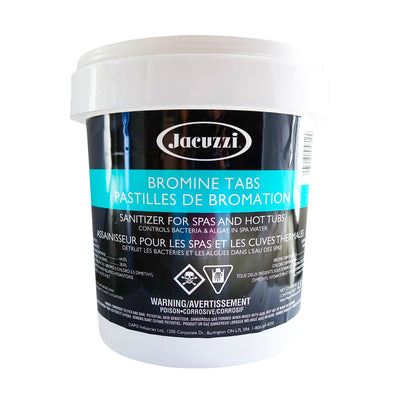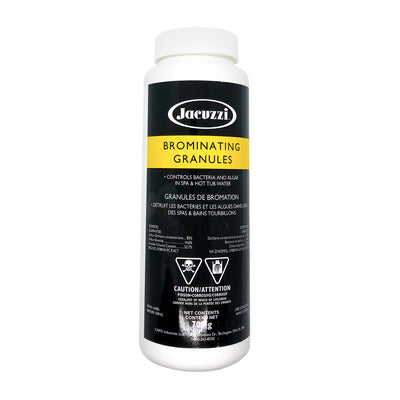A sanitizer is critical for keeping bacteria-free, safe spa water. When it comes to spa sanitizers, chlorine and bromine are the two most popular, and here in Canada, they are the only two deemed safe for use. In this article, we'll help you decide which is right for you.
Chlorine
Chlorine is the most popular and widely available sanitizer on the market and also costs the least. It's fast-acting and well-suited for outdoor use due to its resistance to UV sunlight.
-
Pros:
- Less expensive
- Suited for outdoors
- Widely available
- Acts quicker
-
Cons:
- Shorter lasting
- Harsher on skin*
Note: skin irritation from chlorine is usually due to low pH.
- More likely to smell*
Note: the "chlorine smell" most of us are familiar with is actually caused by a lack of chlorine. Chlorine's reaction with organic contaminants (body oils, cosmetics, etc.) causes the smell. Shocking your spa regularly will prevent this.
Chlorine is less expensive and contains a stabilizer that protects it from UV sunlight, making it a great outdoor choice. As noted above, the drawbacks often associated with chlorine are common misconceptions.
Bromine
People who have concerns about chlorine sensitivity often choose bromine. Bromine takes longer to start acting, but it's stability can mean less frequent adjusting. Unlike chlorine, UV sunlight will deplete bromine.
-
Pros:
- More stable at high temperatures
- Less likely to smell*
Note: Like chlorine, bromine can still product an odor when reacting with organic contaminants if there's a lack of shock in your spa.
-
Cons:
- Harder to wash off skin
- More expensive
- Not suited for outdoors
Bromine can be a good alternative for some skin sensitivities, but due to its higher cost and lack of UV protection, we usually recommend trying chlorine first.
Although bromine can be more stable at high temperatures, which can mean less adjusting, you'll want to adopt a frequent water care routine regardless.
Key Takeaways
Whether you choose chlorine or bromine, both can get the job done. More important is having a good water care routine and testing frequently.
Although chlorine and bromine serve the same purpose, they should not be used interchangeably. If you'd like to switch from one to the other, be sure to complete a drain and fill.



